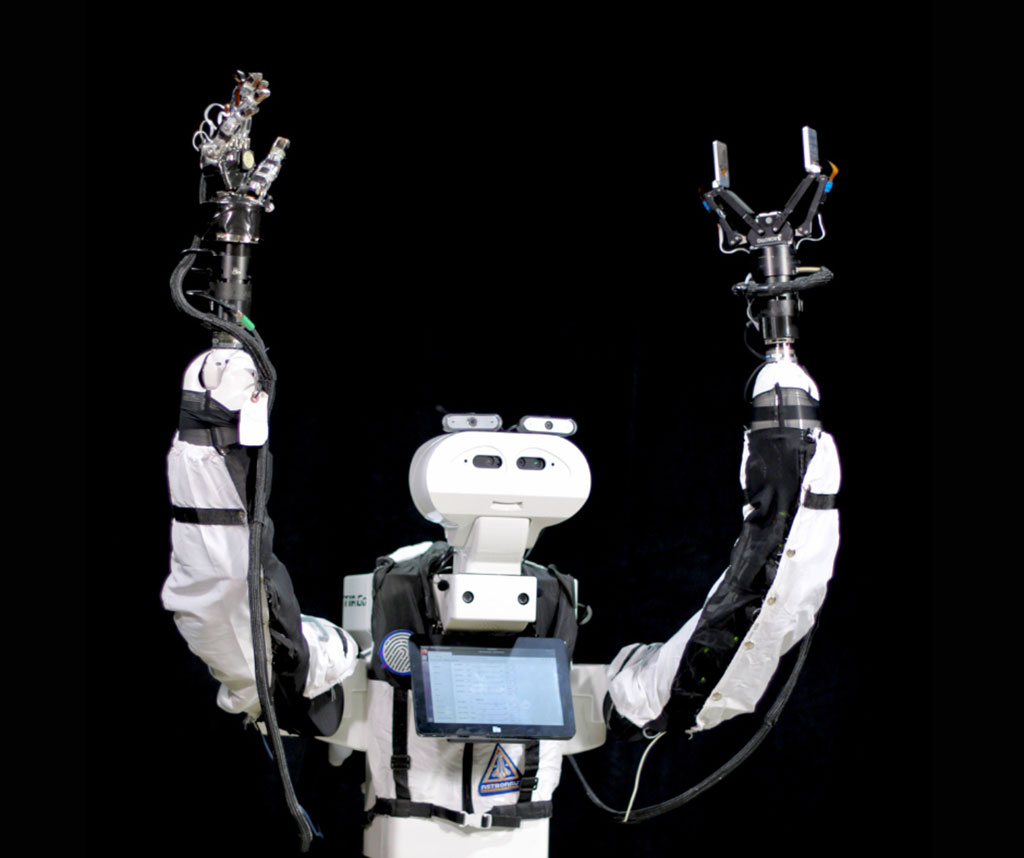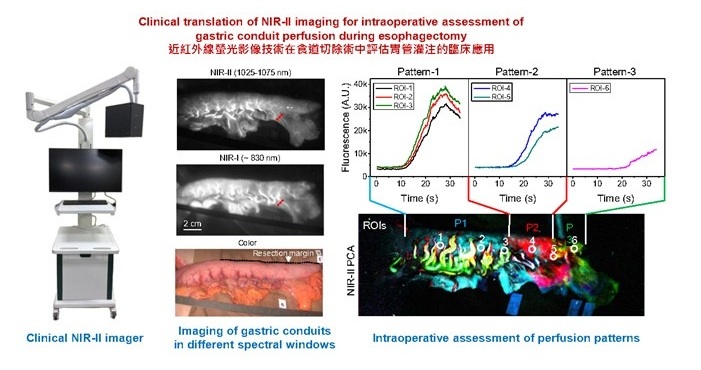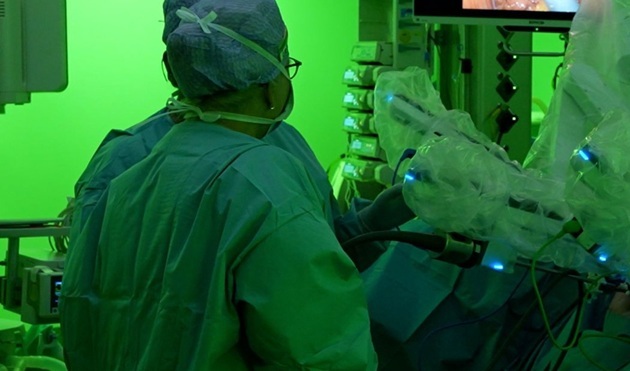First-Of-Its-Kind Robot Allows Clinicians to ‘Feel’ Patients Remotely 
|
By HospiMedica International staff writers Posted on 25 Jul 2023 |

The World Health Organization (WHO) estimates that 15% of patients in low and middle-income nations contract at least one healthcare-associated infection (HAI) during their hospitalization. On average, 1 out of 10 affected patients succumbs to their HAI. The ongoing interest in robots for disinfection and social distancing spurred by the COVID-19 pandemic suggests that robots could aid overburdened hospital staff in diagnosing patients while curtailing the spread of pathogens. Now, a first-of-its-kind robot with haptic perception features electronic skin that can give remote clinicians a sense of touch, helping reduce the spread of HAI.
Touchlab Limited (Scotland, UK) has designed a robot named Välkky which is equipped with the company's cutting-edge e-skin technology that enables it to 'feel'. The electronic skin or "e-skin" can enhance a robot's ability to sense the environment, improves dexterous grasping and teleoperated manipulation, and prepares them for widespread adoption. Touchlab has created low-profile tactile sensors, thinner than human skin, that can be applied to both hard and soft robots. The company's e-skin consists of one or more ultra-thin force sensors transmitting sensations like pressure, vibration, or movement from a robot to a user in real time. The company has employed quantum tunneling to make the e-skin biomimetic - sensing pressure and its location, not just force, thereby enabling the robot to perform tasks like rolling pens, feeling textures, and experiencing pain as a human would.
Touchlab's patented Triaxial technology is capable of sensing the full 3D force vector - normal and shear forces - at the point of contact. Triaxial, the so-called 'holy grail' of e-skin, performs with high precision, resilience, and an unmatched dynamic range like no other sensor. Using the company's deep learning and analytics software add-on makes it possible to identify objects solely through touch and predict and compensate for slips before they occur, facilitating real-time closed-loop operation of robotic grippers in different settings. Operators can utilize a wearable haptic glove to control Välkky, which can perform tasks like serving meals, moving assistive devices, or assisting with a patient's grooming.
The Välkky system is currently under trial at a hospital in Finland. Over a three-month pilot, a team of trained nurses will investigate how robots can assist in providing care, easing workloads, and preventing the spread of infectious diseases. Initially, Välkky will be deployed on a smaller scale, performing tasks like picking up dropped items or monitoring patient vitals, but it holds potential for more complex tasks, such as lifting patients to prevent physical injuries to staff and reducing the spread of infection.
“In the past, telerobots have been limited to being able to see, hear, and speak on behalf of the people using them,” said Dr. Zaki Hussein, CEO of Touchlab. “Now, thanks to our innovative e-skin technology, robots like Välkky can ‘feel’ too—and not only on their fingertips.”
Related Links:
Touchlab Limited
Latest Critical Care News
- AI-Enhanced Wearables Could Transform Type 2 Diabetes and Prediabetes Care
- Breathable Electronic Skin Paves Way for Next-Generation Wearable Devices
- AI Transforming Colon Cancer Diagnosis
- Ventricular Assist Device Offers Long-Term Use in Children Waiting for Donor Heart
- Precision Approach Improves Immunotherapy Effectiveness for ICU Patients with Sepsis
- Soft Robots Could Donate Their Heart to Humans
- Bioadhesive Strategy Prevents Fibrosis Around Device Implants on Peripheral Nerves
- Miniature Non-Invasive Robotic Catheters to Improve Infertility Treatments
- Stick-On Patch Monitors Baby's Movements In Utero
- EEG-Based AI Technology Accurately Diagnoses Alzheimer’s and Dementia
- Robot Lymphatic System Paves Way for Self-Powered Wearables and Machines
- Focused Ultrasound Technique Successfully Treats Pediatric Brain Cancer
- Nasal Drops Fight Brain Tumors Noninvasively
- AI Helps Optimize Therapy Selection and Dosing for Septic Shock
- Glowing Bacteria ‘Pills’ for Detecting Gut Diseases Could Eliminate Colonoscopies
- Skin-Permeable Polymer Patch Delivers Insulin Non-Invasively Through Skin
Channels
Surgical Techniques
view channel
3D-Printed Blood Vessel Scaffolds Could Transform Heart Bypass Surgeries
A tiny, opaque tube held up in a lab may look unremarkable at first glance, but its microscopic surface features could mark a meaningful step forward in heart bypass surgery. Measuring just about one centimeter... Read more
Novel Imaging Technique Helps View Blood Perfusion During Esophageal Surgery
Esophagectomy is a complex and high-risk surgery often required for esophageal cancer, with anastomotic leakage remaining one of its most serious complications. This defect at the surgical suture line... Read more
Minimally Invasive Surgery Proven Safe and Effective for Complex ‘Whipple’ Procedure
Tumors of the pancreatic head often require a highly complex operation known as pancreatoduodenectomy or the Whipple procedure. This surgery involves removing multiple structures and creating several internal... Read more
Catheter-Based Procedures Offer Less Invasive Option for Treatment of Valvular Disease
Valvular heart disease, caused by tight or leaky valves between heart chambers, affects up to 10% of older adults and leads to more than 120,000 deaths globally each year. Traditional open-heart surgery... Read morePatient Care
view channel
Revolutionary Automatic IV-Line Flushing Device to Enhance Infusion Care
More than 80% of in-hospital patients receive intravenous (IV) therapy. Every dose of IV medicine delivered in a small volume (<250 mL) infusion bag should be followed by subsequent flushing to ensure... Read more
VR Training Tool Combats Contamination of Portable Medical Equipment
Healthcare-associated infections (HAIs) impact one in every 31 patients, cause nearly 100,000 deaths each year, and cost USD 28.4 billion in direct medical expenses. Notably, up to 75% of these infections... Read more
Portable Biosensor Platform to Reduce Hospital-Acquired Infections
Approximately 4 million patients in the European Union acquire healthcare-associated infections (HAIs) or nosocomial infections each year, with around 37,000 deaths directly resulting from these infections,... Read moreFirst-Of-Its-Kind Portable Germicidal Light Technology Disinfects High-Touch Clinical Surfaces in Seconds
Reducing healthcare-acquired infections (HAIs) remains a pressing issue within global healthcare systems. In the United States alone, 1.7 million patients contract HAIs annually, leading to approximately... Read moreHealth IT
view channel
EMR-Based Tool Predicts Graft Failure After Kidney Transplant
Kidney transplantation offers patients with end-stage kidney disease longer survival and better quality of life than dialysis, yet graft failure remains a major challenge. Although a successful transplant... Read more
Printable Molecule-Selective Nanoparticles Enable Mass Production of Wearable Biosensors
The future of medicine is likely to focus on the personalization of healthcare—understanding exactly what an individual requires and delivering the appropriate combination of nutrients, metabolites, and... Read moreBusiness
view channel
Philips and Masimo Partner to Advance Patient Monitoring Measurement Technologies
Royal Philips (Amsterdam, Netherlands) and Masimo (Irvine, California, USA) have renewed their multi-year strategic collaboration, combining Philips’ expertise in patient monitoring with Masimo’s noninvasive... Read more
B. Braun Acquires Digital Microsurgery Company True Digital Surgery
The high-end microsurgery market in neurosurgery, spine, and ENT is undergoing a significant transformation. Traditional analog microscopes are giving way to digital exoscopes, which provide improved visualization,... Read more
CMEF 2025 to Promote Holistic and High-Quality Development of Medical and Health Industry
The 92nd China International Medical Equipment Fair (CMEF 2025) Autumn Exhibition is scheduled to be held from September 26 to 29 at the China Import and Export Fair Complex (Canton Fair Complex) in Guangzhou.... Read more













